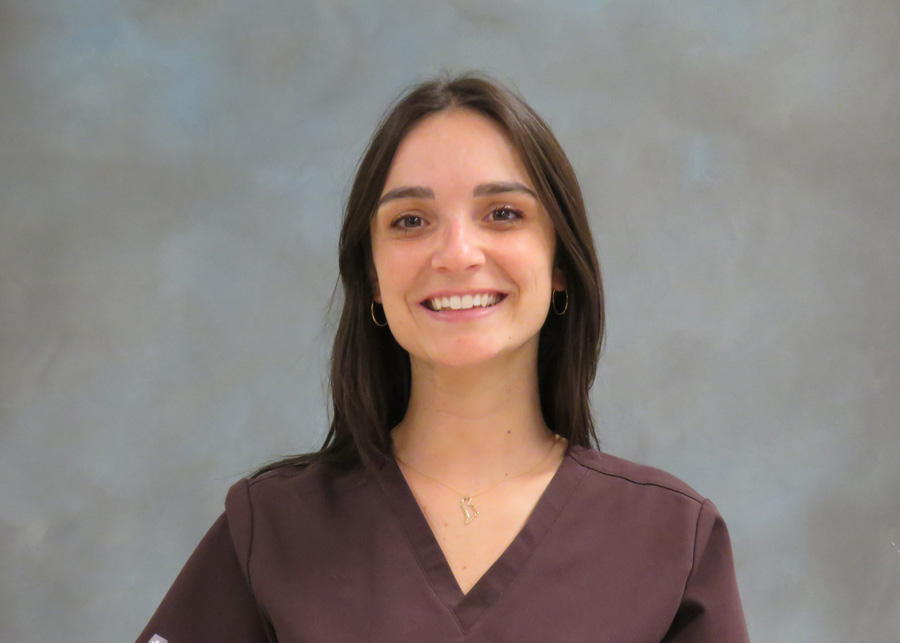Dr. Morton is a clinical assistant professor in the small animal surgery service.
Tell us about your background.
I grew up in rural upstate New York, where I was involved with equine 4-H with my Morgan horse. My father was a farrier, and I was usually tagging along with him on our local veterinarian on farm calls.
After graduating from high school, I relocated to Colorado with family and attended Colorado State University (CSU), where I earned a bachelor’s degree in microbiology. I then pursued a master’s degree in public health and biosecurity from St. Louis University.
I knew early on that veterinary medicine was the career path I wanted to pursue and hoped to combine it with my growing interest in infectious disease.
While living in Colorado, I worked at the CSU Equine Orthopedic Research Laboratory as well as a small animal specialty hospital, where I was initially introduced to advanced surgical procedures.
I earned my DVM from Western University of Health Sciences in Pomona, California, followed by a rotating internship at The Ohio State University. I then came to the University of Illinois for my small animal surgery residency.
After residency, I spent several years as a small animal surgeon in a private specialty practice in Florida before returning to Illinois to join the faculty. I am excited to be back in Champaign-Urbana and contribute to the training of future veterinarians and surgeons.
How did you become interested in surgery?
While in high school, I worked as a kennel tech and veterinary assistant at a local general practice. One weekend I had the opportunity to scrub in and assist with an emergency GDV (gastric dilatation and volvulus) surgery, which made a lasting impression on me.
As I continued with my education and clinical experiences, I came to appreciate how surgery can restore function, resolve complex wounds, or help with cancer treatment. I also love the teaching side of surgery; helping students, interns, and residents develop confidence in the OR and understand the “why” behind each decision.
Tell us about one of your favorite cases.
One that stands out involved a dog that had swallowed a bamboo skewer. The skewer had migrated through the stomach into the spleen and lumbar vertebrae. Upon presentation the dog was severely painful, had difficulty walking, and was febrile. With advanced imaging we were able to determine the cause and exact location of the pain and remove the skewer surgically. The dog went on to make a full recovery.
What are your special interests inside or outside of the clinic?
Clinically, I have particular interests in wound management, minimally invasive procedures, and surgical site infection prevention. As I get settled back at U. of I., I hope to become more involved with hospital biosecurity and safety for both the students and staff as well as the patients.
Outside of the hospital, I enjoy travel, movies, and live music. I try to still be around horses whenever possible.




